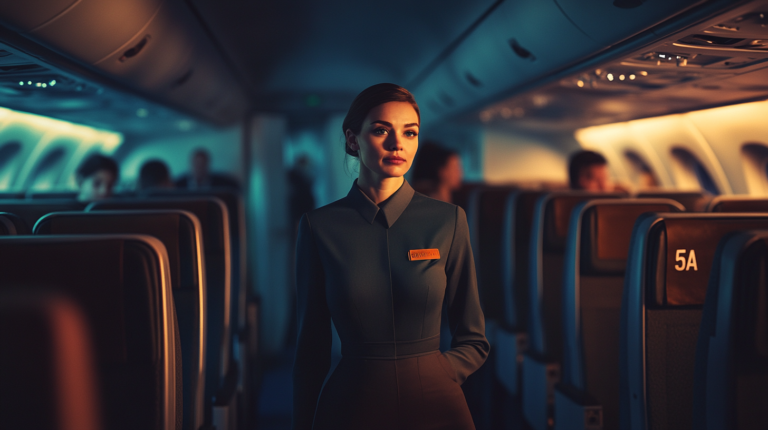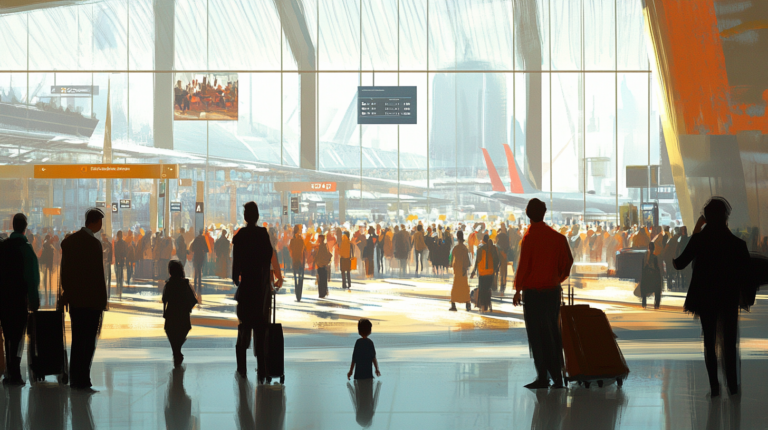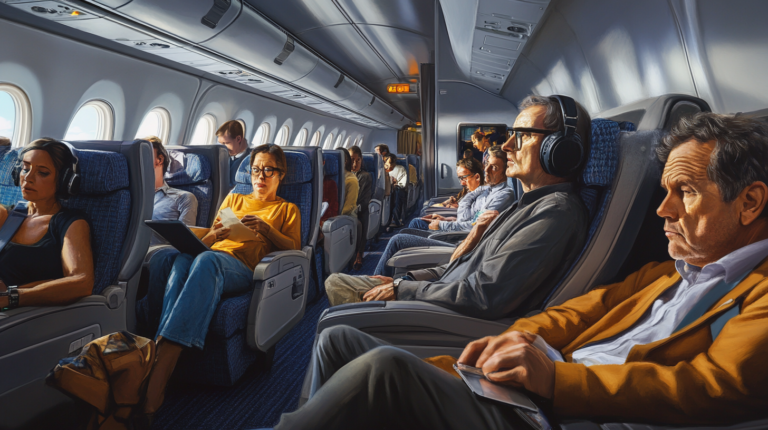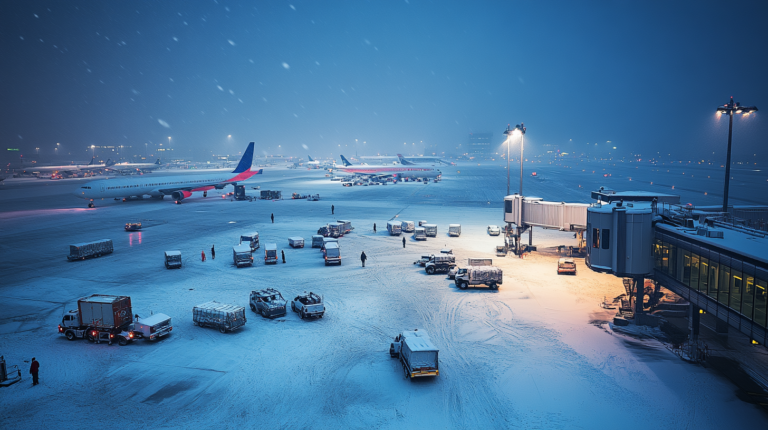Why Do Flight Attendants Sit on Their Hands?

Air travel is more than just a means of transportation; it’s a complex orchestration of safety measures, routines, and protocols designed to protect everyone on board. Amidst the hustle of boarding, the anticipation of takeoff, and the excitement of reaching a destination, passengers might overlook subtle but significant actions of the cabin crew. One such practice that often goes unnoticed is the specific posture flight attendants adopt during takeoff and landing: sitting on their hands. This seemingly simple gesture is, in fact, a critical component of aviation safety procedures and highlights the meticulous training flight attendants undergo to ensure passenger well-being. This article delves deeper into the reasons behind this practice, exploring how it enhances flight safety, supports cabin crew preparedness, and exemplifies the dedication of flight attendants to their crucial roles in the aviation industry.
The Brace Position: A Safety Imperative

Flight attendants are rigorously trained to prioritize safety above all else, recognizing that their actions can significantly impact the well-being of everyone on board. During the critical phases of flight—specifically taxi, takeoff, landing, and periods of turbulence—they adopt a brace position designed to minimize the risk of injury in the event of an emergency. These moments are when the aircraft is most vulnerable to unexpected events, and the preparedness of the cabin crew is paramount.
The brace position involves several key elements that work together to protect vital parts of the body:
- Sitting Upright: Maintaining an upright posture with the seatbelt securely fastened ensures that the body is properly aligned with the seat, providing the best support against sudden movements.
- Sitting on Hands: Placing the hands under the thighs with palms facing upwards stabilizes the arms and prevents them from moving uncontrollably, which could cause injury both to the flight attendant and nearby passengers.
- Feet Placement: Placing feet flat on the floor helps brace the body and reduces the likelihood of leg injuries during impact.
This carefully adopted posture helps stabilize the body to minimize movement during sudden impacts or severe turbulence. By sitting on their hands, flight attendants effectively restrict limb movement, reducing the risk of injury from flailing arms. Moreover, it protects their arms from harm, ensuring they remain uninjured and ready to assist passengers immediately after an impact. This practice underscores the critical importance of standardized safety procedures in aviation , illustrating how every detail is considered in the pursuit of passenger safety.
The Science Behind Sitting on Hands

The act of sitting on hands is more than just a precautionary measure; it is rooted in an understanding of human physiology and psychology during high-stress situations. This simple action serves multiple safety functions that contribute to the overall effectiveness of the cabin crew during emergencies:
- Minimizing Movement: In the event of sudden decelerations or impacts, the body’s natural reflex is to brace or reach out, which can lead to injuries. Securing the hands under the thighs helps prevent these involuntary motions, reducing the likelihood of harm caused by uncontrolled limb movements.
- Protecting Limbs: The arms and hands are essential tools for flight attendants, especially during evacuations when they may need to open emergency exits or assist passengers. By keeping their arms and hands secured and protected, they minimize the chance of fractures, sprains, or other injuries that could impede their ability to perform critical tasks.
- Maintaining Focus: Adopting this position helps flight attendants remain focused and composed. The physical act of sitting on their hands can serve as a grounding technique, allowing them to center themselves mentally amidst the chaos of an emergency. This calm demeanor is crucial, as it helps to reassure passengers and maintain order during stressful situations.
These safety functions highlight the intricate planning behind every procedure in aviation. By understanding the psychological and physiological responses to in-flight emergencies , flight attendants can better prepare themselves to handle unexpected events effectively.
The Silent Review: Mental Preparedness in Action
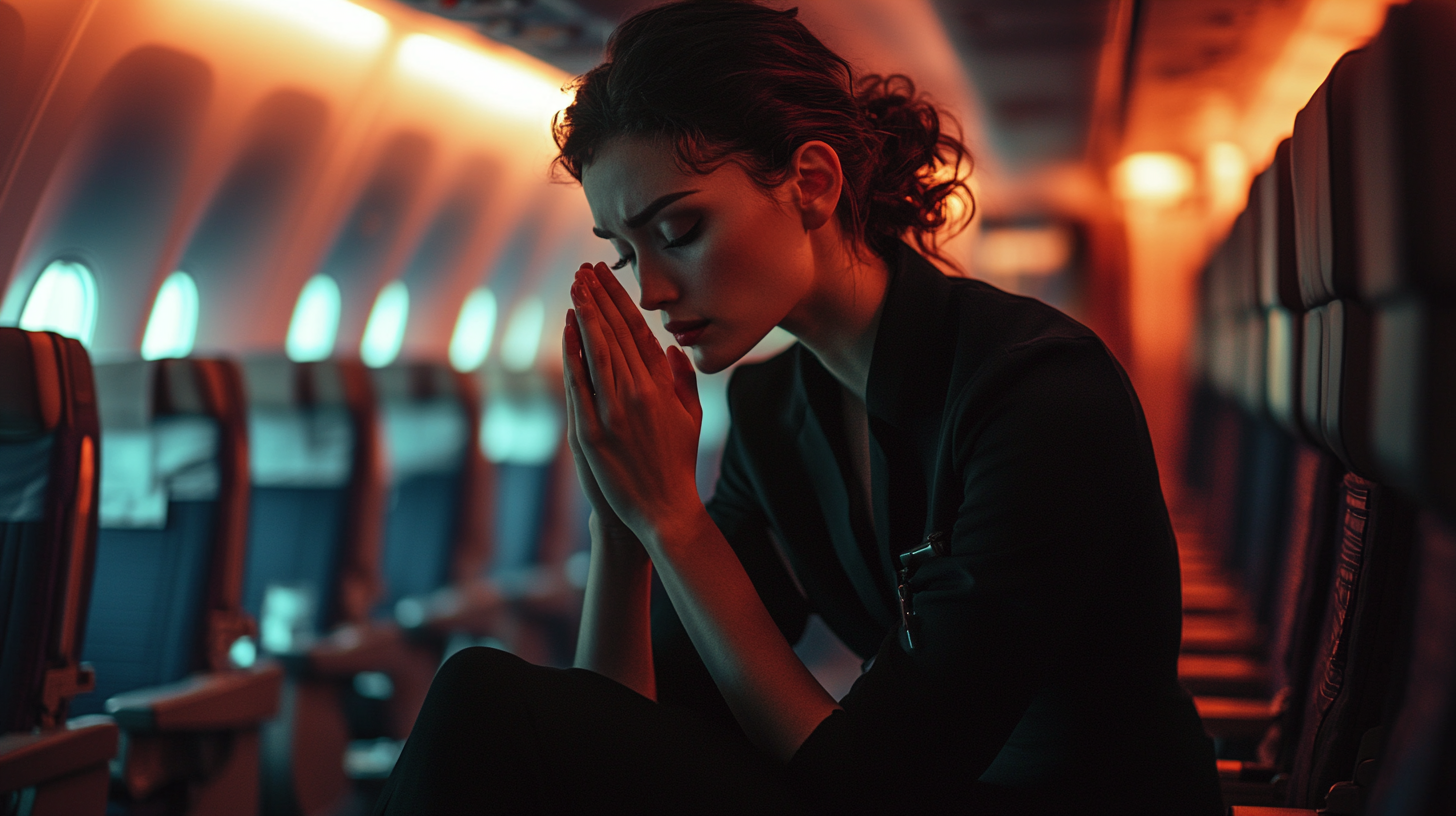
While in the brace position, flight attendants engage in a critical mental exercise known as the “silent review.” This practice is a comprehensive mental run-through of emergency procedures, equipment locations, and evacuation protocols. By continuously rehearsing these procedures in their minds, flight attendants ensure they remain alert and prepared for any situation that may arise. The silent review involves several key components:
- Reviewing Emergency Exits: Mentally rehearsing the operation of emergency exits and doors, including the specific steps required to open them under various conditions.
- Recalling Safety Equipment: Reaffirming the locations and uses of safety equipment such as fire extinguishers, life vests, oxygen bottles, and first aid kits.
- Planning Evacuation Strategies: Considering the best evacuation routes based on the aircraft’s current position, potential obstructions, and the nature of any potential emergency.
- Assessing Cabin Safety: Observing the cabin environment to identify any potential safety concerns, such as unsecured luggage, blocked aisles, or passenger behavior that may impact emergency procedures.
This proactive practice, recommended by aircraft manufacturers like Airbus, helps the cabin crew maintain a heightened state of readiness while minimizing distractions. It ensures that, in the event of an emergency, flight attendants can respond swiftly and effectively, having mentally prepared for various scenarios. The silent review exemplifies the importance of constant vigilance in aviation safety , highlighting how mental preparedness is just as crucial as physical readiness.
Adapting to Different Aircraft and Seat Configurations

The aviation industry encompasses a wide variety of aircraft models, each with unique designs and configurations. The specific brace position adopted by flight attendants may vary depending on the aircraft type and the design of the jump seats they occupy. For instance, some jump seats face forward while others face aft (backward), and this orientation influences how flight attendants position themselves during critical phases of flight. Airlines develop protocols tailored to their specific equipment and aircraft, but the fundamental principles of safety remain consistent across the industry. Key considerations include:
- Rigid Posture: Regardless of seat orientation, adopting a firm and upright posture is essential to withstand potential impacts. This rigidity helps in absorbing shock and reducing the risk of injury.
- Seat-Specific Adjustments: Flight attendants modify their brace position based on the design of their seats. For example, if seated in a rear-facing jump seat, they may adjust the positioning of their head and body to align properly with the seat’s support structures.
- Equipment Familiarity: Comprehensive knowledge of different aircraft types is crucial. Flight attendants receive training on the specific features and safety equipment of each aircraft in their airline’s fleet, ensuring they can adjust their brace position appropriately. This adaptability is vital, as procedures that work on one aircraft may not be suitable for another.
This adaptability underscores the versatility and professionalism of flight attendants. Their ability to adjust to different environments ensures consistent safety standards across all flights. Understanding these nuances is part of the comprehensive training flight attendants receive for multi-aircraft proficiency , demonstrating the depth of their expertise in aviation safety.
Real-World Incidents Highlighting the Importance
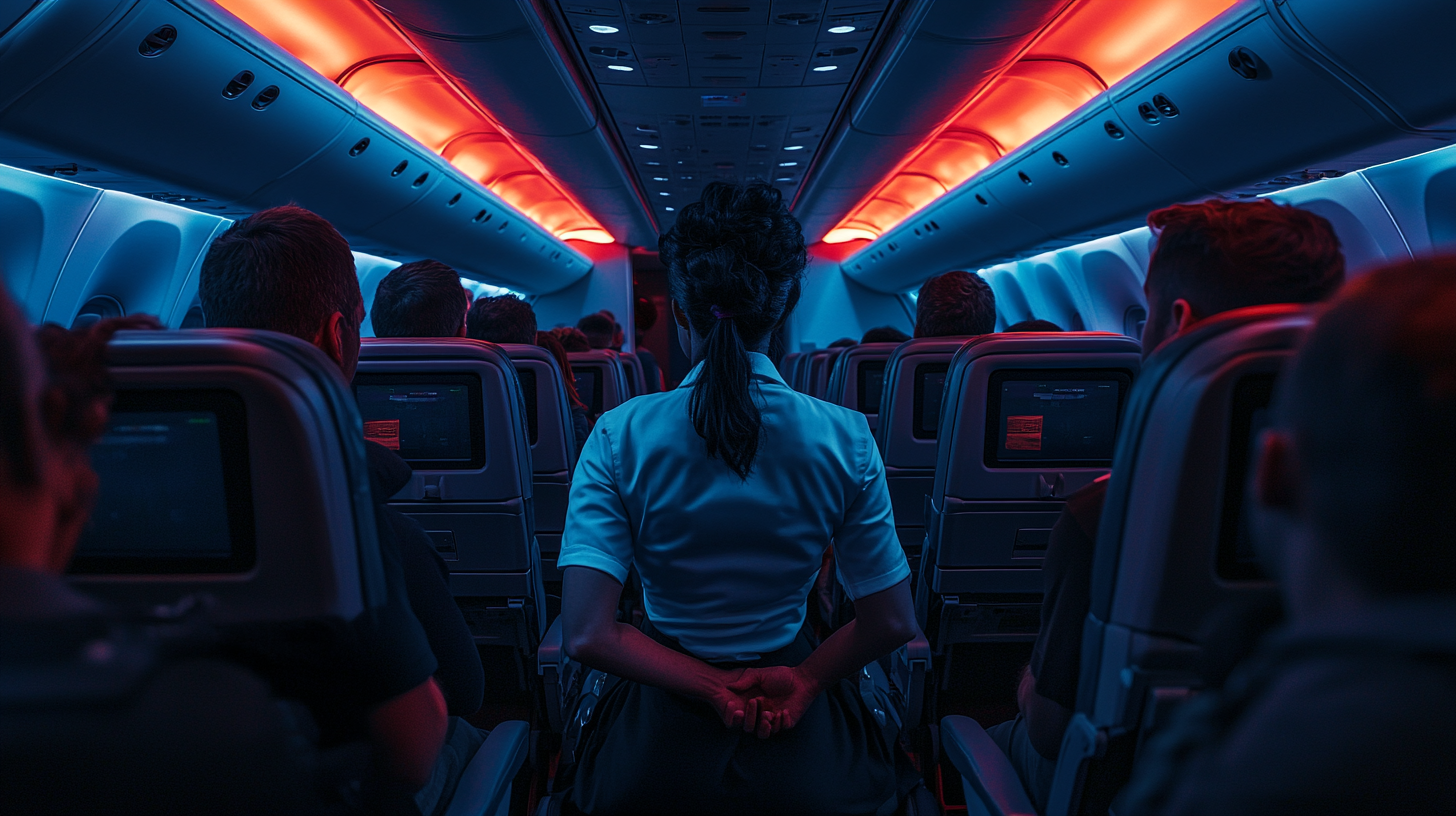
Throughout aviation history, various incidents have underscored the critical nature of these safety procedures. Sudden turbulence, unexpected rough landings, and other in-flight emergencies can occur without warning, emphasizing the need for constant preparedness among cabin crew. In such events, the readiness of flight attendants—achieved through practices like the brace position and silent review—can significantly influence the safety and well-being of passengers. Their ability to respond swiftly and effectively often makes a crucial difference in the outcome of these situations, reinforcing the essential role of flight attendants during in-flight emergencies .
Beyond Service: The Multifaceted Role of Flight Attendants
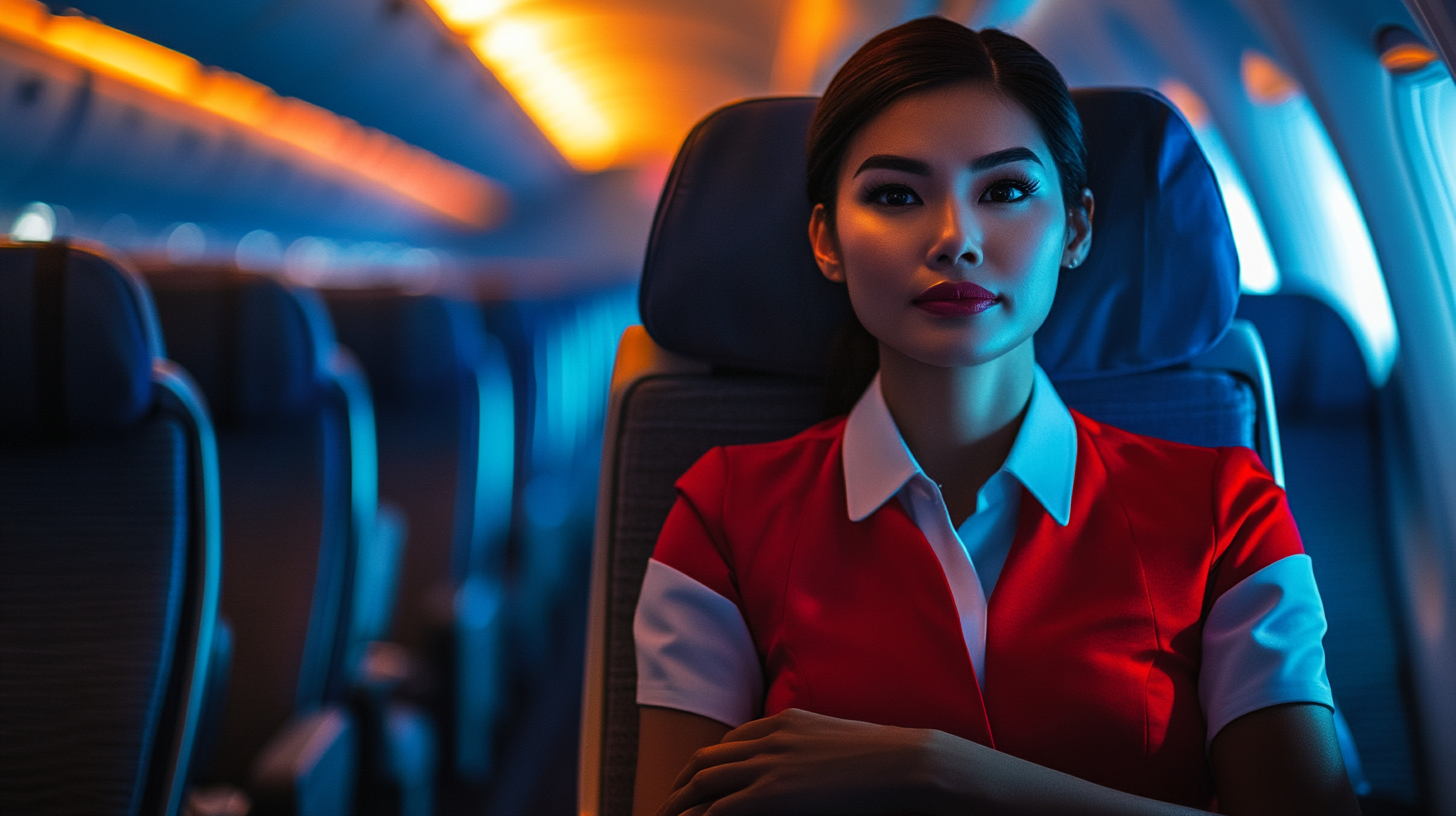
While passengers often associate flight attendants primarily with in-flight service—such as serving meals and beverages—their foremost responsibility is to ensure the safety and security of everyone on board. This multifaceted role encompasses a wide range of duties that are crucial for the smooth and secure operation of the flight. Their responsibilities include:
- Emergency Preparedness: Flight attendants complete extensive training and certifications, such as the Cabin Crew Attestation (CCA). This preparation equips them to handle various emergencies, including medical incidents, evacuations, and security threats. Their expertise is vital to managing unexpected situations effectively.
- Safety Protocol Enforcement: They are responsible for ensuring passengers comply with all safety regulations. This includes verifying that seatbelts are fastened, carry-on items are properly stowed, and electronic devices are used appropriately. By enforcing these protocols, they reduce risks associated with non-compliance during critical flight phases.
- Passenger Assessment: Conducting silent safety checks allows flight attendants to observe passengers discreetly. They monitor for any unusual behavior, signs of distress, or intoxication that could pose a safety risk. This proactive approach helps in addressing potential issues before they escalate.
- Equipment Checks: Before every flight, flight attendants perform thorough inspections of emergency equipment, such as life rafts, oxygen tanks, and first aid kits. Ensuring that all equipment is functional and accessible is essential for dealing with emergencies effectively.
These duties require a high level of attention to detail, situational awareness, and a thorough understanding of safety procedures. Practices like sitting on their hands during critical flight phases are not just routine—they are integral to reinforcing the discipline and readiness needed to perform their roles effectively. The comprehensive responsibilities of cabin crew in passenger safety highlight the essential nature of their position in the aviation industry.
What Passengers Should Know
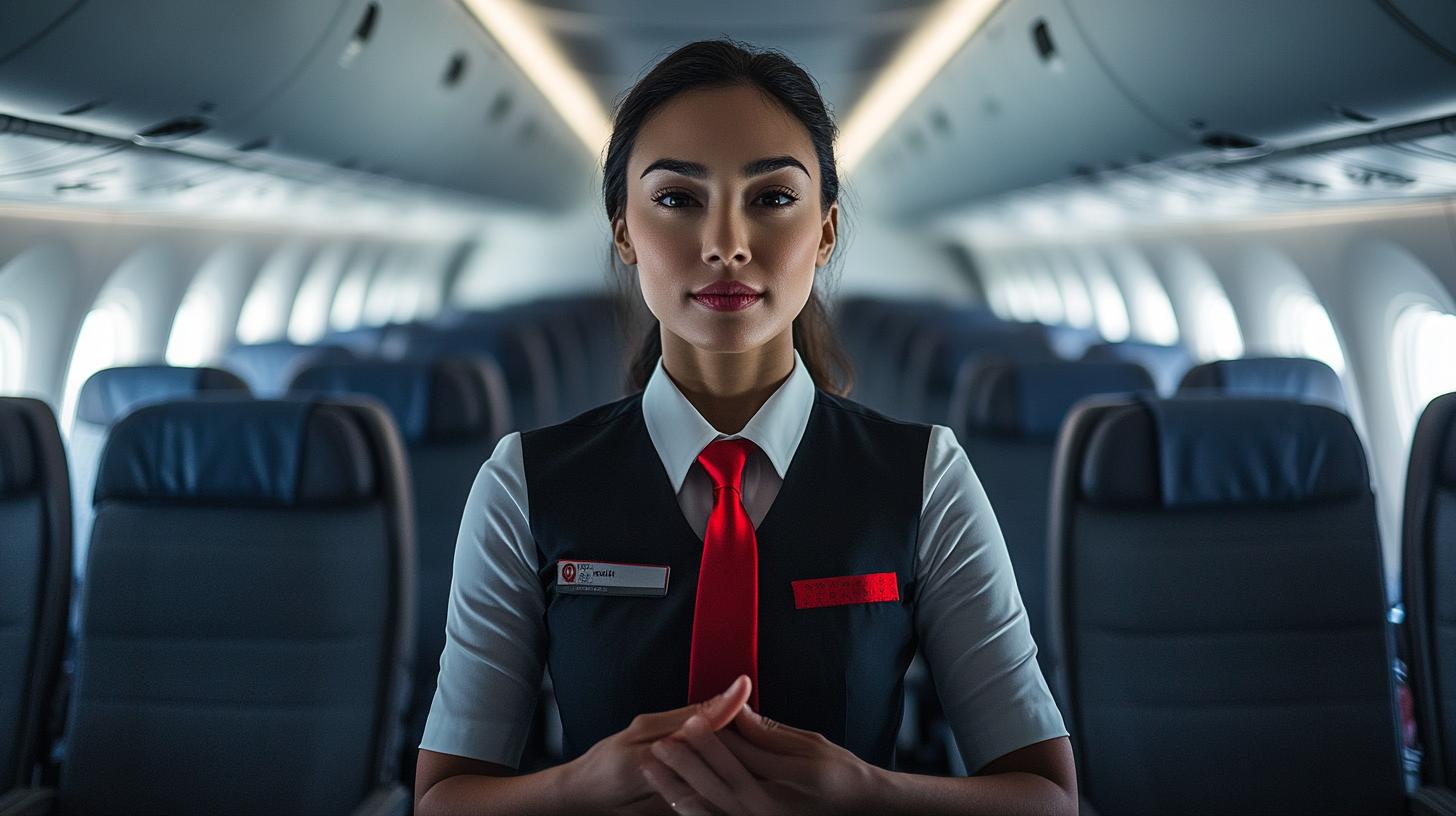
While flight attendants adopt specialized positions like sitting on their hands during takeoff and landing, passengers are not required to do the same. However, there are important measures that passengers can take to enhance their own safety and contribute to a secure flight environment:
- Stay Alert: Remain attentive during takeoff and landing, which are the most critical phases of flight. Avoid distractions such as using electronic devices or sleeping, so you can respond quickly if necessary.
- Review Safety Cards: Take a few moments to read the safety information card located in the seat pocket in front of you. Familiarize yourself with the aircraft’s safety features, emergency exits, and the correct brace position for passengers. This knowledge can be invaluable in an emergency.
- Follow Instructions: Listen carefully to the safety briefings given by the cabin crew and comply promptly with any instructions they provide during the flight. Their guidance is designed to ensure everyone’s safety.
- Secure Belongings: Ensure that all carry-on items are properly stowed under the seat in front of you or in the overhead bins. Loose items can become hazardous projectiles during turbulence or sudden movements.
- Keep Seatbelt Fastened: Even when the seatbelt sign is off, keeping your seatbelt fastened while seated helps protect against unexpected turbulence.
By understanding and participating in these safety measures, passengers can contribute to a safer flight experience for themselves and others. Awareness and cooperation with the cabin crew are essential components of flight safety. For further information, passengers can refer to guidelines for passenger safety during flights , which provide in-depth advice on best practices while on board.
The Role of Training and Certification
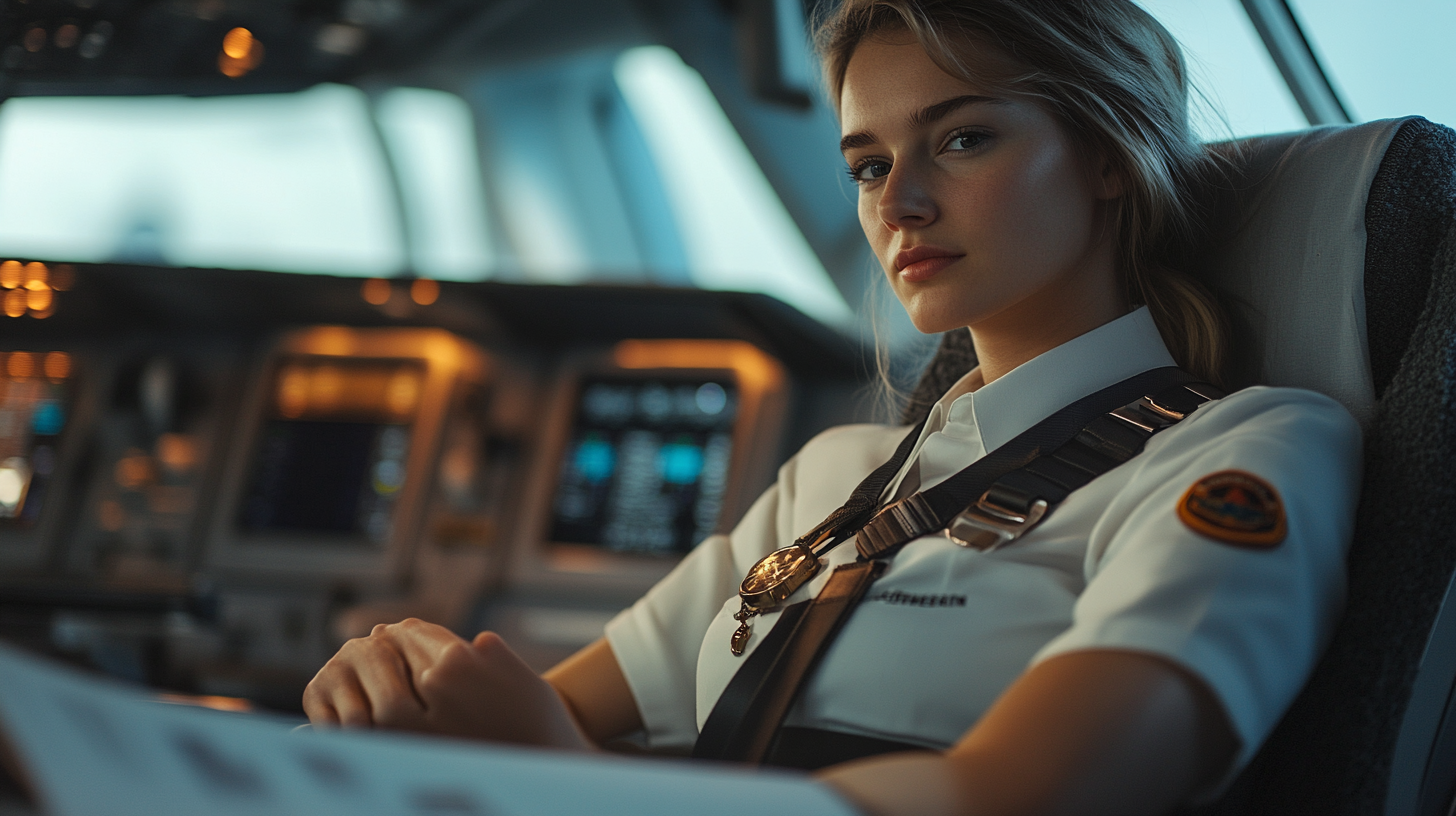
Flight attendants undergo extensive and rigorous training to prepare for a wide range of potential emergency scenarios. This training is designed to equip them with the knowledge, skills, and confidence needed to handle challenging situations effectively. Key components of their training include:
- Evacuation Procedures: Flight attendants learn how to evacuate an aircraft quickly and safely under various conditions, such as on land or water. They practice operating emergency exits, deploying evacuation slides, and directing passengers to safety.
- First Aid and Medical Training: They are trained to provide first aid and respond to medical emergencies, including CPR, using defibrillators, and managing conditions like choking or allergic reactions. This training enables them to assist passengers until professional medical help is available.
- Firefighting Techniques: Handling potential fire situations on board is critical. Flight attendants learn how to identify different classes of fires, use fire extinguishers effectively, and implement smoke control procedures to protect passengers and the aircraft.
- Security Protocols: They receive instruction on managing security threats, such as dealing with unruly passengers, identifying suspicious behaviors, and procedures for hijacking or bomb threats. Ensuring the aircraft remains secure is a top priority.
- Crew Resource Management (CRM): Training emphasizes teamwork, communication, and decision-making to enhance coordination among crew members during routine and emergency situations.
This rigorous training is essential for flight attendants to perform their duties effectively. Practices like the brace position are integral parts of their preparedness, reflecting the depth of their commitment to safety. The comprehensive training programs for cabin crew safety preparedness ensure that flight attendants are equipped to handle emergencies with professionalism and expertise.
Final Thoughts

The practice of flight attendants sitting on their hands during takeoff and landing is a deliberate and strategic safety measure rooted in extensive training and well-established protocols. This seemingly simple action is a testament to the aviation industry’s unwavering commitment to passenger safety and underscores the meticulous preparation of cabin crew members. By adopting this position, flight attendants not only protect themselves from potential injury but also ensure they are fully prepared to assist passengers swiftly in the event of an emergency.
Understanding these procedures provides passengers with deeper insight into the critical roles flight attendants play beyond providing in-flight service. Their presence is not just about comfort and hospitality; it is fundamentally about safety and security. The next time passengers observe the crew’s posture during critical flight phases, they can appreciate that this practice is more than just a routine—it is a vital component of keeping everyone on board safe.
Follow us back to Seat 5A for more insights into the world of aviation safety and the dedicated professionals who make air travel secure and comfortable.

